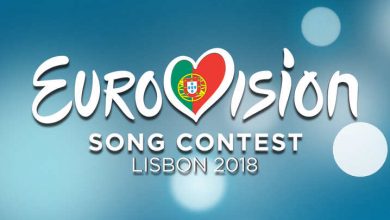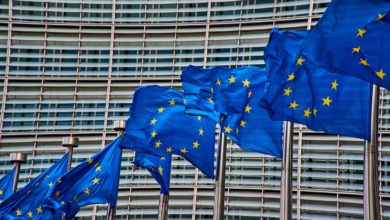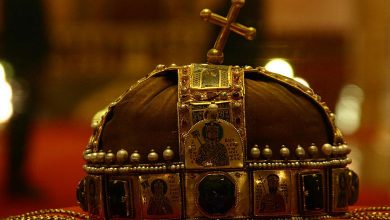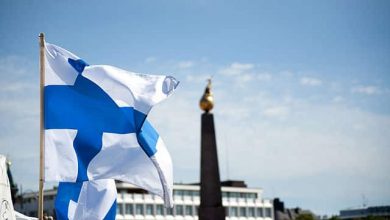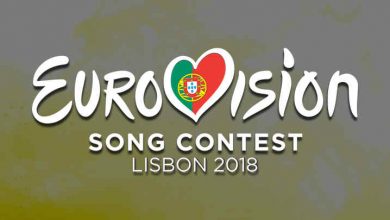
All European languages, no matter their family, use a variation of the word Europe to call the European continent. That, of course, is not a coincidence. The name Europe derives from a Greek mythological character with the same name, Europa. Europa was the daughter of Agenor, the Phoenician king of Tyre, in Lebanon. The king of Greek gods, Zeus, became infatuated after seeing her beauty and decided to seduce her.
One day, while Europa was pasturing her father’s herd, Zeus transformed himself into a tame white bull and mixed in with the other animals. When the girl saw the bull, she started caressing him and, after a while, she eventually climbed on his back.
At that point, bull-Zeus ran to the sea and took Europa to the island of Crete, where he finally revealed his true identity and they lay together. As a consequence, Europa had three sons, Minos, Rhadamanthus and Sarpedon, and married the king of Crete, Asterios.

The myth of Europa is tightly linked to the origin of social development in our continent. Her son Minos is the legendary king of the Minoan civilization, the earliest known civilization in Europe. Minos is also associated with the palace in Knossos and its mythical labyrinth built nearby by Daedalus, and with the Minotaur, the half-man half-bull closed in it. Furthermore, if you look both legends of Europa and the Minotaur with a broader point of view, you can notice an extremely important element: the cult of the sacred bull. Bulls weren’t idolized in Crete only, but all around the Mediterranean sea.
For instance, there is also another myth narrated about Zeus, cows and a girl: the myth of Io. Io was a priestess of goddess Hera, and Zeus was enamoured with her. There are several versions of the story, but they all end with Io being transformed into a heifer and condemned to wander the Earth. At one point, she reached Anatolia by passing across the strait between the Black Sea and the Sea of Marmara: this channel is called Bosphorus after her, as the name literally means “cattle strait”. Curiously enough, according to Greek mythology, Io is an ancestress of Europa, being her great-great-grandmother: all considered, it’s not surprising that two of the Galilean moons of planet Jupiter (the Latin version of Zeus) were named after the two girls.
Back to the sacred bull, another example can be found in a broadly known episode of biblical Exodus.
Specifically, while Moses was climbing to Mount Sinai, the Israelites fleeing from Egypt erected a golden calf as an idol. Moreover, it is thought that even the name Italy derives from cows. The most accredited theory claims, in fact, that in pre-Roman times the cult of bulls was widespread in the central-southern peninsula, to the point where Greeks started calling some Calabrian tribes Vituli, or “young cattle”. The name then extended to the entire territory, becoming “Vituliú” or “Ouitoulía”, and eventually “Italia”.

Finally, bulls were sacred to Celts and Irish populations as well (two examples are Donn Cúailnge and Tarvos Trigaranus), while Romans sacrificed bulls wishing for the well-being of the population. This practice has somehow lasted to modern Europe: Spanish corrida de toros is its direct descendant.
Talking about names, the etymology of Europa is uncertain. The original word contains the elements “eurús” (meaning “wide”) and “ōps, ōpós” (meaning “eye” or “face”), so Europe might mean “wide-gazing” or “broad of aspect”. Another less-corroborated hypothesis wants the word “Europe” to derive from the Semitic term for “west”, in opposition to Assyric Asu (from which originates “Asia”) or to Greek Anatolé (hence “Anatolia”), both meaning “sunrise” and “east”. In any case, Europe started to indicate first a part of Thrace, then all territories north of the Mediterranean Sea, along with two other female figures naming the nearby continents: Asia, an Oceanid, in the East and Libya, a legendary Egyptian princess, in the South. Remarkably, Libya was also a granddaughter of Io and grandmother of Europa.
It is also interesting to note that Europa was also associated with two important goddesses of fertility: Astarte and Demeter. In the 2nd century AD, “Europa” was used as an epithet of Demeter, the Greek goddess of agriculture, harvest, and fertility, who presided also over the sacred law and the cycle of life and death.
Concerning the former deity, it is thought that the whole myth of Europa and Zeus may derive from a sacred union between the Phoenician deities Astar and Astarte in bovine form. The fact that Europa’s husband is called Asterion seems to strengthen this hypothesis. Also, in Sidon, a Phoenician city, there was a temple of Astarte sacred to Europa as well. According to Lucian of Samosata, the two goddesses might have been fused together, in the guise of full, “broad-faced” moon.

